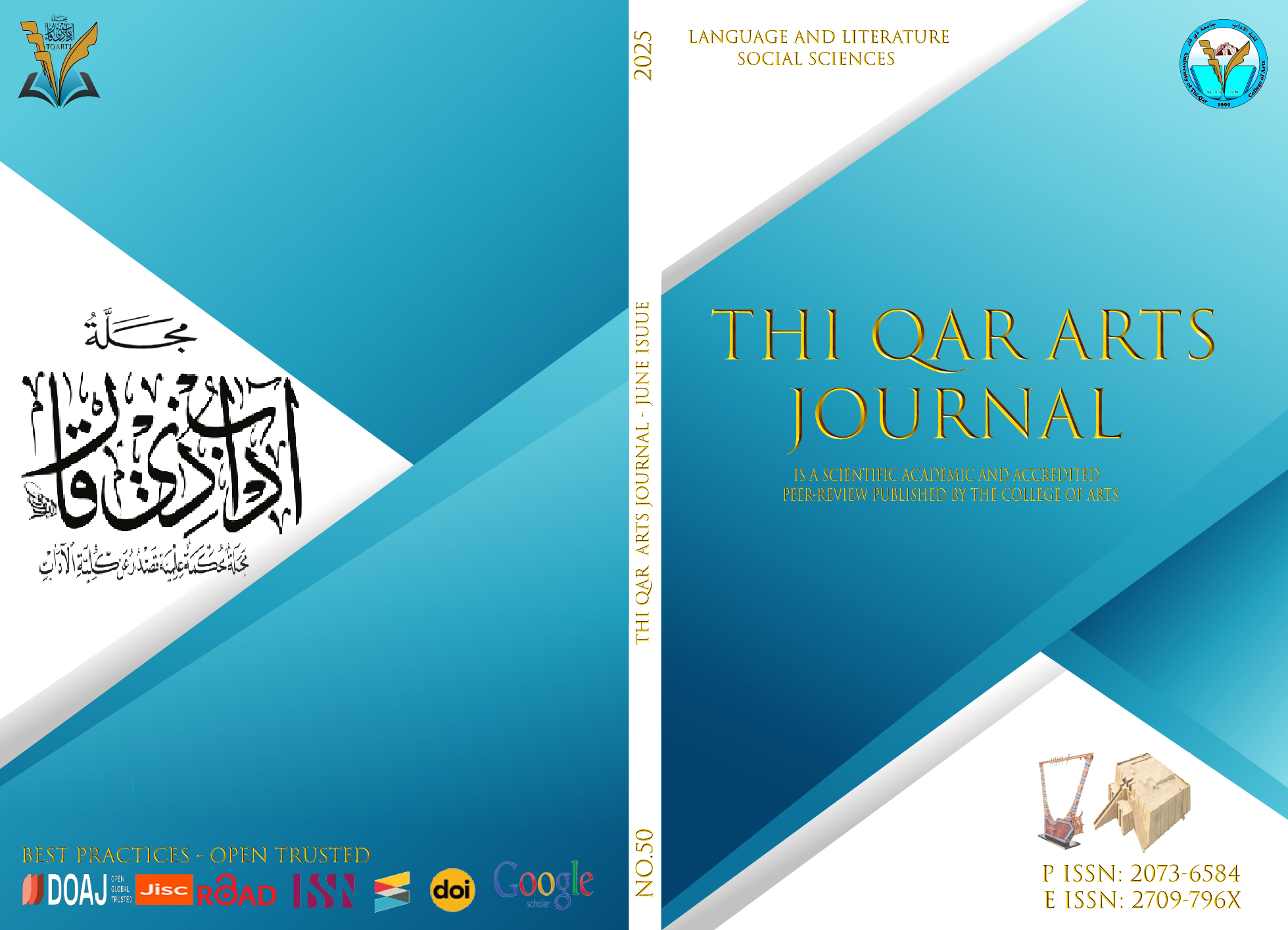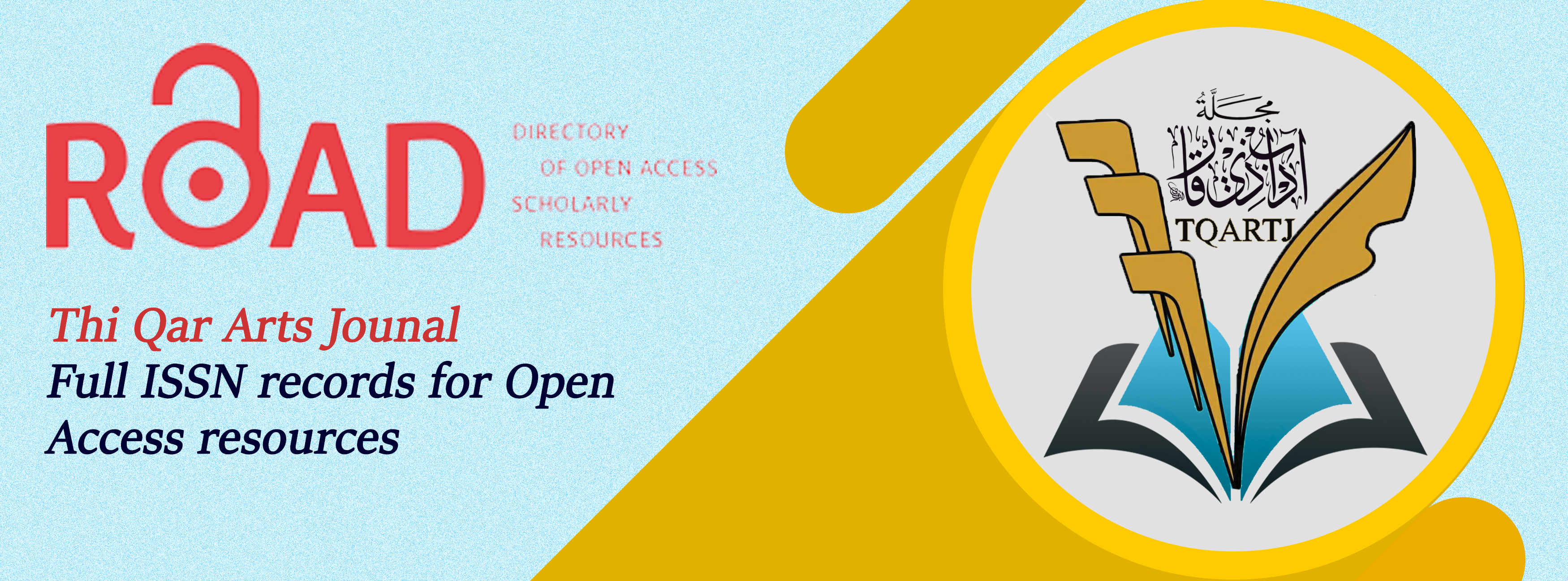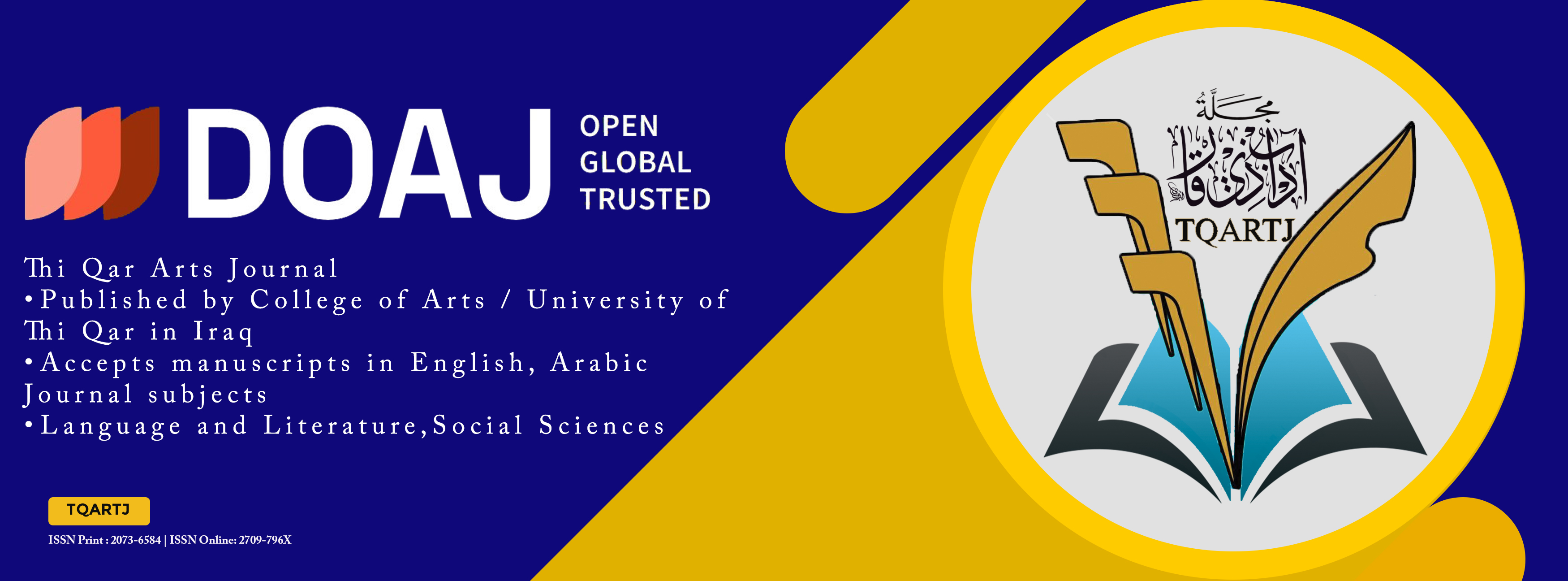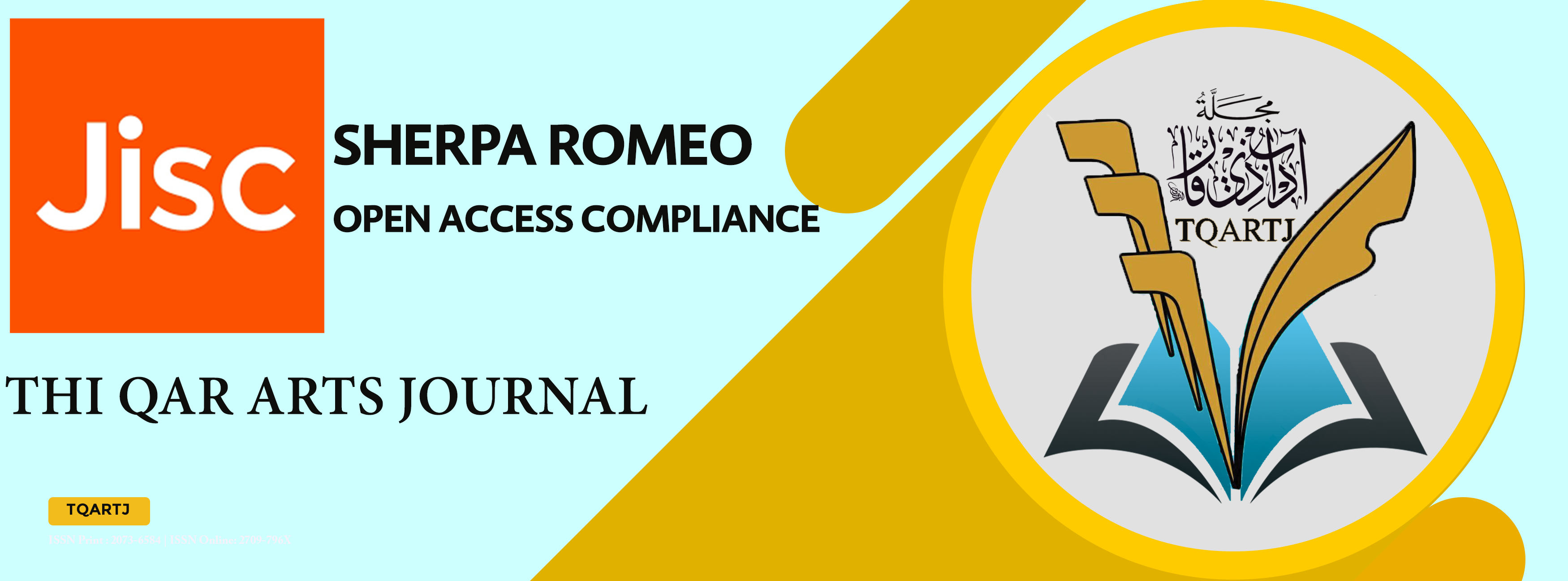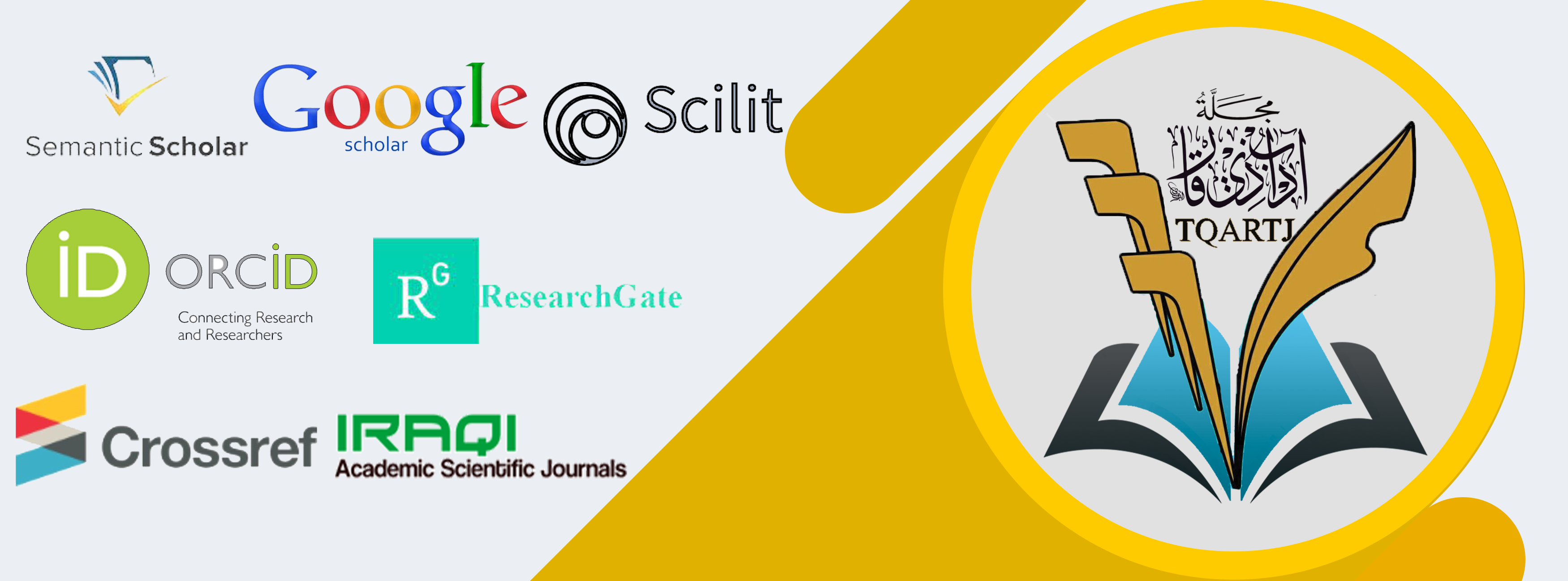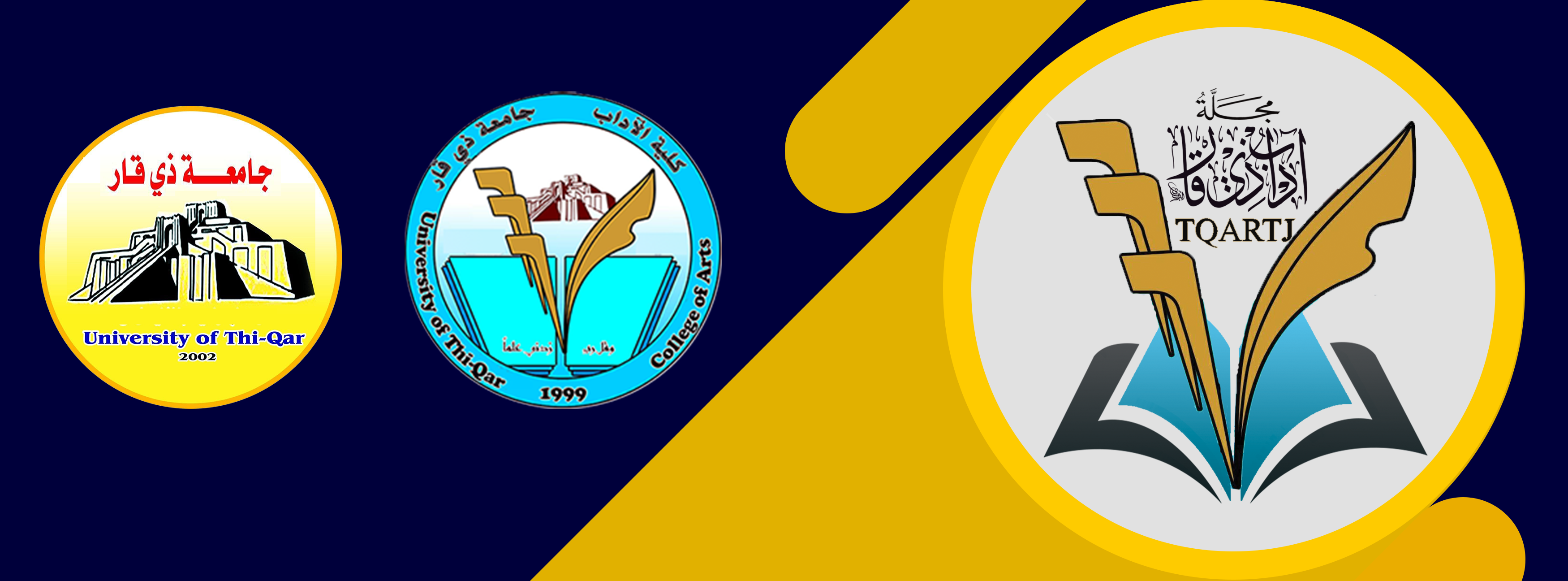علاقات الاستقامة والإحالة في الكلام بين سيبويه وفان دايك
DOI:
https://doi.org/10.32792/tqartj.v3i50.819Keywords:
Text Grammar, Grammaticality, Reference, Acceptability and Unacceptability, Van Dijk, SibawayhAbstract
وضع علماء النحو العربي الأوائل ولا سيما سيبويه أسسا لاستقامة المعنى في الكلام بما يحقق له المقبولية لدى المتلقي أي يحكم له بالقبول أو عدم القبول على وفق تلك الأسس والقواعد ، ومثلما وقف على ذلك سيبويه نجد الرؤى ذاتها والتحليلات المتقاربة عند علماء النص إذ يلحظ ذلك جليّاً عند فان دايك في بعض تحليلاته الجملية ، وإن اختلف المصطلح فيما بينهما.
لذا وقفت هذه الدراسة على بيان بعض العلاقات الدلالية في تحليلاتهم التي تسهم في انسجام المعنى داخل الجمل ، وهي علاقات الاستقامة والإحالة في الكلام التي بوساطتها تحدد مستويات الصواب والخطأ في سياق التركيب اعتماداً على ترابطه الشكلي ، وترابطه الدلالي معاً، بما يحقق استقامة الكلام وصحته ، او عدم استقامته فيدخله في حيز المحال ، أو الكذب ، أو القبح ، وهو ما ورد عند فان دايك من علماء النص تحت مصطلح المقبول والأقل مقبولية ، وغير المقبول من الكلام وفقاً للترجمة الواردة فيه .
وقد بيّن البحث تلك التقسيمات ومدى تقارب الرؤى بين سيبويه وفان دايك ، بل تقارب الأمثلة التي وردت عندهما ، وتقارب الرؤى التحليلية ، بما يثبت عمق التحليلات النحوية القديمة التي لم تقف عند حدود التركيب الشكلي كما يُتهم الفكر النحوي العربي.
تُعدّ علاقات الاستقامة والإحالة من أبرز العلاقات الدلالية التي تسهم في انسجام المعنى داخل التراكيب اللغوية، إذ تُستخدم لتحديد مدى صحة أو خطأ التركيب استنادًا إلى دلالته وسياقه. وقد أشار النحويون إلى مثل هذه العلاقات بوصفها معيارًا يُحكم من خلاله على الكلام: فإن كان متسقًا ومتجانسًا في عناصره، حُكم له بالاستقامة، مما يحقق له درجة عالية من المقبولية لدى المتلقي، وهو ما يُصنَّف ضمن الكلام المقبول في نظر علماء النص.
Downloads
References
1. ʿAbd al-Laṭīf, M. Ḥamāsah. The Structure of the Arabic Sentence. Dār Gharīb for Printing, Publishing and Distribution, Cairo, 2003.
2. al-Sīrāfī, Abū Saʿīd al-Ḥasan ibn ʿAbd Allāh ibn al-Marzubān (d. 368 AH). Sharḥ Kitāb Sībawayh, ed. Aḥmad Ḥasan Mahdalī and ʿAlī Sayyid ʿAlī. Dār al-Kutub al-ʿIlmiyyah, Beirut, 1st ed., 2008.
3. van Dijk, Teun A. Textual Linguistics: An Interdisciplinary Introduction, trans. and commentary by Dr. Saʿīd Ḥasan Baḥīrī. Dār al-Qāhirah lil-Kitāb, Cairo, 1st ed., 2001.
4. Sībawayh, Abū Bishr ʿAmr ibn ʿUthmān ibn Qanbar (d. 180 AH). Kitāb Sībawayh, ed. and commentary by ʿAbd al-Salām Muḥammad Hārūn. Maktabat al-Khānjī, Cairo, 1408 AH / 1988.
5. al-Khaṭṭābī, Muḥammad. Text Linguistics: An Introduction to Discourse Coherence. Al-Markaz al-Thaqāfī al-ʿArabī, Casablanca, 2nd ed., 2006.
6. Ismāʿīl, Dr. Hanāʾ Maḥmūd. Qur'anic Grammar in Light of Text Linguistics, foreword by Dr. Karīm Ḥusayn Nāṣiḥ. Dār al-Kutub al-ʿIlmiyyah, Beirut, 1st ed., 2012.
7. ʿAbd al-Rāḍī, Dr. Aḥmad Muḥammad. Text Grammar between Tradition and Modernity. Maktabat al-Thaqāfah al-Dīniyyah, Cairo, 1st ed., 2008.
8. ʿAbd al-Laṭīf, M. Ḥamāsah. Grammar and Semantics: An Introduction to Syntactic-Semantic Meaning. Dār Gharīb, Cairo, 2006.
9. van Dijk, Teun A. Text and Context: Explorations in the Semantics and Pragmatics of Discourse, trans. ʿAbd al-Qādir Qanīnī. Africa al-Sharq, Morocco and Beirut, 2000.
Academic Articles
10. ʿAlīmān, Dr. Yūsuf Sulaymān. Arabic Grammar between Sentence Grammar and Text Grammar: A Case from Sībawayh’s Book. Jordanian Journal of Arabic Language and Literature, Vol. 7, No. 1, 2011.
Published
License
Copyright (c) 2025 د. نسوم عوفي حسون

This work is licensed under a Creative Commons Attribution 4.0 International License.
The journal applies the license of CC BY (a Creative Commons Attribution International license). This license allows authors to keep ownership of the copyright of their papers. But this license permits any user to download, print out, extract, reuse, archive, and distribute the article, so long as appropriate credit is given to the authors and the source of the work. The license ensures that the article will be available as widely as possible and that the article can be included in any scientific archive.
